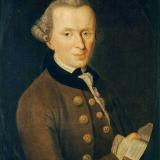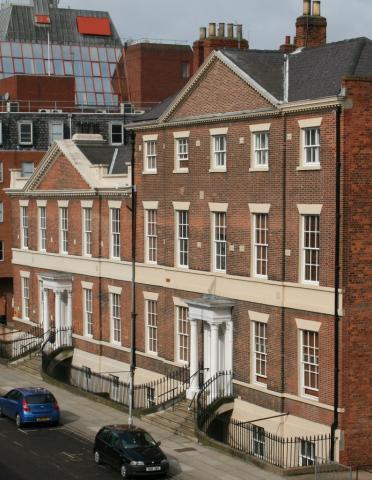Hull Merchants and the Philosopher Immanuel Kant
Early in the first ‘lockdown’ the society received an enquiry from Simon Wain-Hobson, a leading virologist working at the Pasteur Institute in Paris. He is a collector of, and writer on, Georgian drinking glasses, and he had recently purchased a glass engraved with the arms of the Burton family of Hotham Hall. Simon was seeking information on the Burtons. In responding I mentioned another Georgian drinking glass that had come to my attention as the result of an enquiry a couple of years earlier from a German student who was researching the philosopher Immanuel Kant. This glass carried an engraved inscription dated 1763 with the names of Immanuel Kant and six others, four of whom were from Hull either on business in, or resident at, Konigsberg, then in Prussia. (now Kaliningrad, Russia, it was Kant’s home all his life .) Simon was very excited about the Kant glass, because of its rarity and widened his research, making contact with Marianne Motherby in Berlin. Marianne had reproduced a picture of the glass in an article she had written about her ancestor Hull-born Robert Motherby, a close friend of Kant, who is named on the glass. The result was an article by Simon Wain-Hobson on the glass and its Hull links that appeared in Glass Matters, the journal of the Glass Society, in December 2020. We have been allowed to add this article to our website. (see link to Konigsberg Kant Glass.pdf on the right handside of this page).
Robert Motherby had left Hull to work for, and later partner Joseph Green, who was ‘best friend’, daily companion and great influence on Kant. Green’s brother Philip was one of the most successful Hull shipowners in the late 18th century owning one of the first two ships to enter the New (Queen’s) Dock when it opened in 1778. Philip Green’s home in the Northern Suburb still stands, the former YPI building, 83 George Street. It was in this house that Charles Staniforth, another whose name is on the Kant glass, died in 1797. He was brother-in-law of the Greens, and his son John Staniforth became a Member of Parliament for Hull. The fourth of the Hull men named on the glass, John Chappell, captained ships regularly going from Hull to Konigsberg. In April 1801 Chappell’s daughter Ann married the navigator Matthew Flinders, who three months later set out on his expedition which led to the first inshore circumnavigation of Australia. Ann did not see her husband for a further nine years, as for six years he was a prisoner of the French. For part of this time Ann Flinders and her mother lived in Beverley.
David Neave February 2021
Images
 Immanuel Kant
Immanuel Kant


